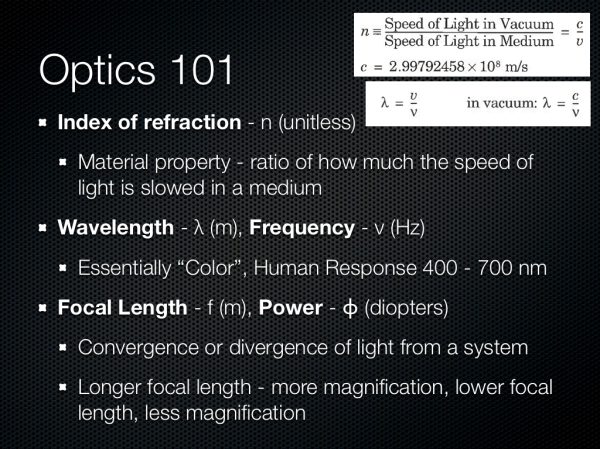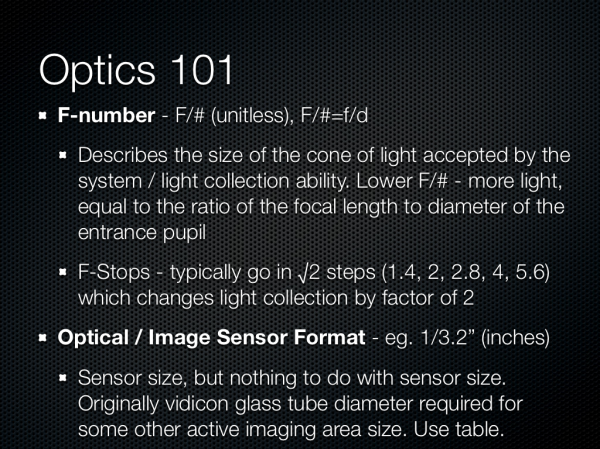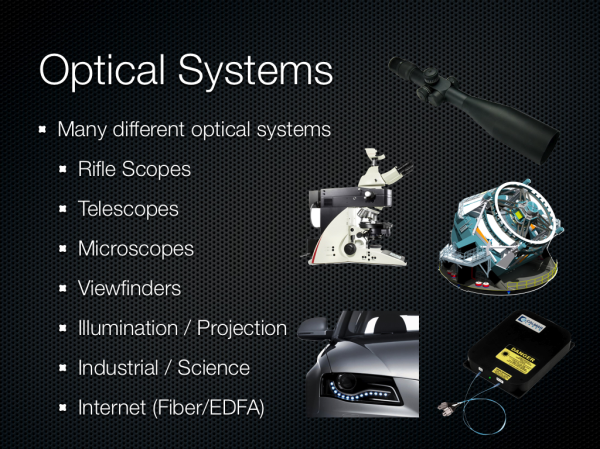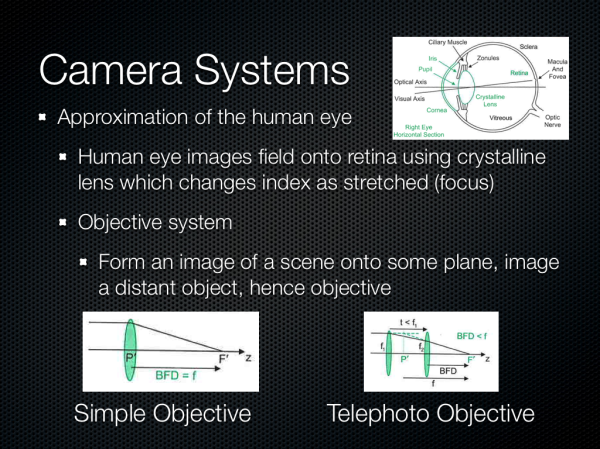Understanding Camera Optics & Smartphone Camera Trends, A Presentation by Brian Klug
by Brian Klug on February 22, 2013 5:04 PM EST- Posted in
- Smartphones
- camera
- Android
- Mobile
Recently I was asked to give a presentation about smartphone imaging and optics at a small industry event, and given my background I was more than willing to comply. At the time, there was no particular product or announcement that I crafted this presentation for, but I thought it worth sharing beyond just the event itself, especially in the recent context of the HTC One. The high level idea of the presentation was to provide a high level primer for both a discussion about camera optics and general smartphone imaging trends and catalyze some discussion.
For readers here I think this is a great primer for what the state of things looks like if you’re not paying super close attention to smartphone cameras, and also the imaging chain at a high level on a mobile device.
Some figures are from of the incredibly useful (never leaves my side in book form or PDF form) Field Guide to Geometrical Optics by John Greivenkamp, a few other are my own or from OmniVision or Wikipedia. I've put the slides into a gallery and gone through them pretty much individually, but if you want the PDF version, you can find it here.
Smartphone Imaging
The first two slides are entirely just background about myself and the site. I did my undergrad at the University of Arizona and obtained an Optical Sciences and Engineering bachelors doing the Optoelectronics track. I worked at a few relevant places as an undergrad intern for a few years, and made some THz gradient index lenses at the end. I think it’s a reasonable expectation that everyone who is a reader is also already familiar with AnandTech.
Next up are some definitions of optical terms. I think any discussion about cameras is impossible to have without at least introducing the index of refraction, wavelength, and optical power. I’m sticking very high level here. Numerical index refers of course to how much the speed of light is slowed down in a medium compared to vacuum, this is important for understanding refraction. Wavelength is of course easiest to explain by mentioning color, and optical power refers to how quickly a system converges or diverges an incoming ray of light. I’m also playing fast and loose when talking about magnification here, but again in the camera context it’s easier to explain this way.
Other good terms are F-number, the so called F-word of optics. Most of the time in the context of cameras we’re talking about working F-number, and the simplest explanation here is that this refers to the light collection ability of an optical system. F-number is defined as the ratio of the focal length to the diameter of the entrance pupil. In addition the normal progression for people who think about cameras is in square root two steps (full stops) which changes the light collection by a factor of two. Finally we have optical format or image sensor format, which is generally in some notation 1/x“ in units of inches. This is the standard format for giving a sensor size, but it doesn’t have anything to do with the actual size of the image circle, and rather traces its roots back to the diameter of a vidicon glass tube. This should be thought of as being analogous to the size class of TV or monitor, and changes from manufacturer to manufacturer, but they’re of the same class and roughly the same size. Also 1/2” would be a bigger sensor than 1/7".
There are many different kinds of optical systems, and since I was originally asked just to talk about optics I wanted to underscore the broad variety of systems. Generally you can fit them into two different groups — those designed to be used with the eye, and those that aren’t. From there you get different categories based on application — projection, imaging, science, and so forth.
We’re talking about camera systems however, and thus objective systems. This is roughly an approximation of the human eye but instead of the retina the image is formed on a sensor of some kind. Cameras usually implement similar features to the eye as well – a focusing system, iris, then imaging plane.






















60 Comments
View All Comments
ssj3gohan - Sunday, February 24, 2013 - link
Couple of comments on this and your rant in the podcast :)First of all, you're lauding HTC for their larger pixel size and lamenting the move towards smaller pixels. But isn't it true that effective resolution, especially when your pixels are significantly smaller than the airy disk, is basically a function of integration area? The only downside to using smaller pixels is that you increase the effect of read noise and decrease fill factor. In an ideal world, a 100MP phone camera with the same sensor size as a 10MP one would make pictures that are just as good. With read noise being essentially absent nowadays, I don't see the reason to particularly bash on 13MP phone cameras compared to larger-pixel but same-integration-area sensors. They make the same pictures, just take up a little less space on the sd card.
Of course, you could make the argument that it's wrong to give in to the 'moar megapixels!' consumer side of things and try to educate people that sometimes less is more.
Next, you say that refractive index and focal length is essentially what limits the focal length for very thin cameras, but this can be alleviated by using diffractive optics (not yet now, but in the future). We may very well see 3mm-thickness 35mm focal length equivalent camera modules with large sensors someday. It's technically possible. Especially with, as you said, nanodiamonds and other very high refractive index synthetic lens materials in the making.
Next, about the resolving power. There's the airy disk and rayleigh's criterion, but this is not the end of resolving power. It does make sense to oversample beyond this point, you will get extra image information. It becomes exponentially less as you increase the megapixel count but you can still get about 150% extra image information by oversampling beyond the size of the airy disk. Again, in an ideal world without drawbacks to doing so, this does make sense.
tuxRoller - Sunday, February 24, 2013 - link
Especially, with the use of metamaterials that make use of negative indexes of refraction to allow you to resolve detail beyond the diffraction limit?ssj3gohan - Monday, February 25, 2013 - link
Well, keep in mind that the reason you can resolve beyond the diffraction limit is the fact that the geometrical properties of the sensor and optics differ. Optics will by definition cause gaussian blur as their defect mode, while the sensor has square and offset pixels. These areas do not overlap perfectly, so in order to perfectly image that blurry optical image you need pixels that are smaller than the fundamental size of the diffraction pattern (airy disk).These optical effects don't go away when you're using metamaterials/quantum opticss/etc. Light will still be a wave that will not necessarily enter the sensor perfectly perpendicular.
UltraTech79 - Monday, February 25, 2013 - link
I ave seen many many reviews of lenses and the technical details of digital imaging ect, and almost every time the article would have really shitty JPG images. I found it highly ironic. Kudos to you for using PNG throughout this quality article.AnnihilatorX - Monday, February 25, 2013 - link
I was reading the review for Sony's Xperia Z at techradar, I was astonished at how poor the 13MP Exmor RS sensor performs. Frankly, the image looks blurry and more like it's taken by a 5MP scaled up, with heavy noise even in a well lit scene:http://mos.futurenet.com/techradar/art/mobile_phon...
While I don't really care too much about smart phone camera, and I use my budget DSLR (cheaper than a smart phone) for my photography pleasure, I was thinking if the MP race and new gen smart phones can eliminate the need for me to lunge a DSLR around. If this article is correct on the physical limitations of smartphone camera technology, looks like there is still a future for DSLRs.
danacee - Monday, February 25, 2013 - link
Traditional, aka -crap- P&S clearly are at a disadvantage now, only the still very useful of optical zoom keeping them alive. However high end, 'big' sensor P&S such as the not too young Sony RX100 are still many many generations ahead of smartphone cameras, even the Nokia Pureview has terrible image quality next to it.pandemonium - Tuesday, February 26, 2013 - link
I am surprised at the lack of mention for Carl Zeiss lenses in here. If you're going to make an article about lens quality and cameraphone technology, why wouldn't you include the best in the market for such? Or are we disputing that fact?Also, not all cameraphones suffer as much from dramatic lens flare discoloration issues as said "very popular phone."
ShieTar - Tuesday, February 26, 2013 - link
Sure, you get a 3µm diffraction spot on your camera, and with 1.1µm pixels it gets oversampled. But that does not have to be a waste. As long as the diffraction pattern is well characterised, you can remove the diffraction effect through a deconvolution as part of your ISP. This even remains true for near-field optical effects that occur once you pixel size gets close to or below the image wavelength. As long as such corrections are implemented, and as long as your per-pixel noise is small enough for these algorithms to work, decreasing the pixel size does make a certain sense.Once noise becomes a larger problem then resolution, the smaller pixels hurt though, by wasting light through the larger crop factor and also by increasing the overall read-out noise. When exactly that point is reached depends on the light conditions you want to use your camera in, so it would be interesting to understand for which kind of conditions smartphone-cameras are being optimised.
rwei - Wednesday, February 27, 2013 - link
hurr hurrtheSuede - Wednesday, February 27, 2013 - link
I don't know where your Rayleigh limit comes from, but in real world optics, Rayleigh is:[1.22 x F# x wavelength] -giving 1.3µm for green (550nm) light in an F2.0 lens.
But maybe it's your interpretation of Rayleigh that is wrong, and that's where the error stems from. From the graphs, you show spot resolution limit as 2xRayleigh - and it isn't. Spot resolution is 1xRayleigh - giving an F2.0 lens a maximum resolution of the aforementioned 1.3µm - NOT 2.6µm.
The definition of Rayleigh:
-"Two point sources are regarded as just resolved when the principal diffraction maximum of one image coincides with the first minimum of the other.
"Just resolved" in this case means a resulting MTF of about 7% - i.e The minimum distance between two peaks where you can still resolve that they are two, not one large is equal to the RADIUS of the first null on the Airy disk. Not the diameter. This is quite a common error made by people from the "E" side of ElectrOptics.